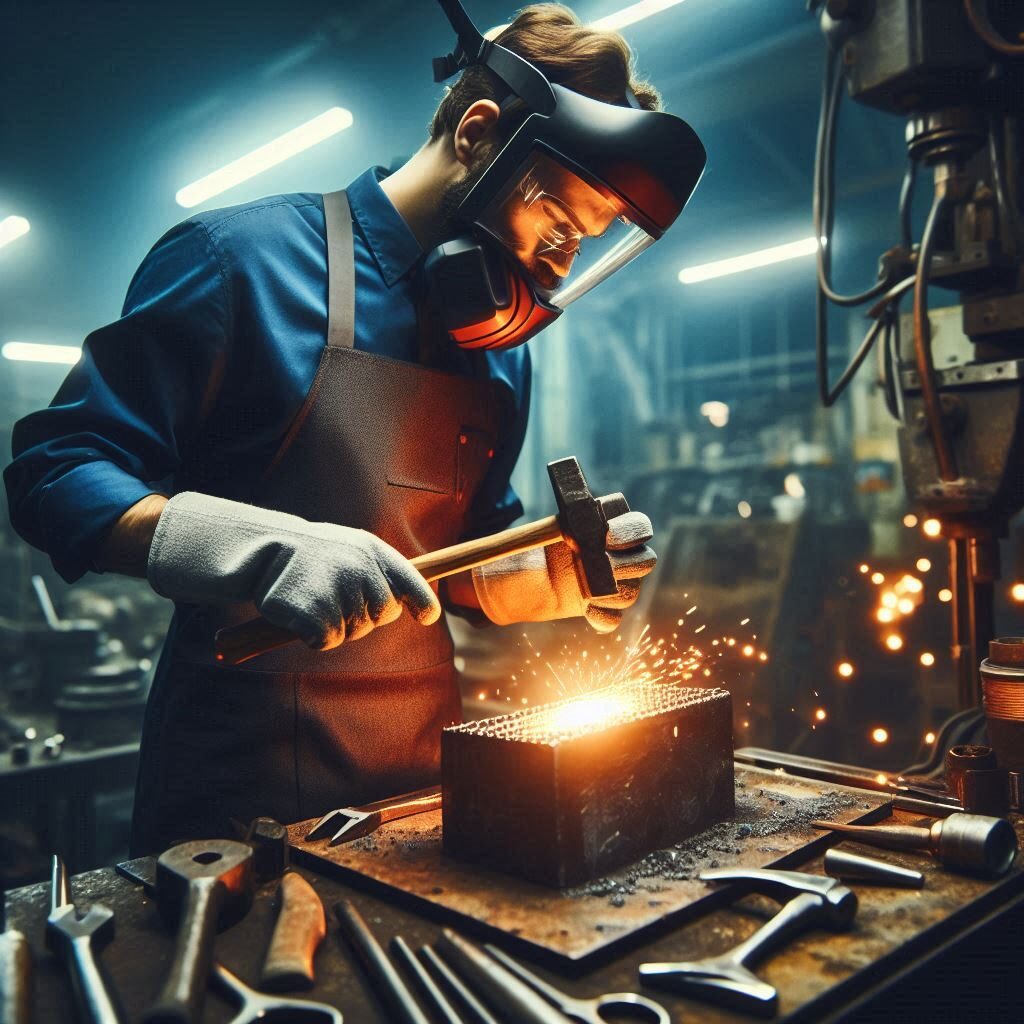Metalworking encompasses various techniques to shape and manipulate metals into desired forms. These processes are broadly categorized into forming, cutting, joining, and surface treatment methods.
Forming Processes
Forming involves shaping metal without removing material, typically through deformation:
- Rolling: Metal is passed through rollers to reduce thickness or shape it into sheets, plates, or coils.
- Extrusion: Metal is forced through a die to create long shapes with a uniform cross-section, such as pipes or profiles.
- Forging: Metal is shaped by compressive forces, often using hammers or presses, to produce strong components.
- Drawing: Metal is pulled through a die to reduce its diameter, commonly used for wires and tubes.
- Stamping: Sheet metal is formed into specific shapes using dies and presses, suitable for high-volume production.
Cutting Processes
Cutting removes material to achieve the desired shape:
- Machining: Processes like turning, milling, and drilling use rotating tools to remove material and achieve precise dimensions.
- Laser Cutting: A focused laser beam melts or vaporizes material, allowing for intricate cuts with minimal heat-affected zones.
- Water Jet Cutting: High-pressure water, often mixed with abrasives, cuts through materials without generating heat.
- Electrical Discharge Machining (EDM): Electrical discharges erode material from the workpiece, ideal for hard metals and complex shapes.
Joining Processes
Joining techniques combine multiple parts into a single assembly:
- Welding: Melting and fusing materials together, commonly used in construction and manufacturing.
- Brazing: Joining metals by melting a filler material above 450°C but below the melting point of the base metals.
- Soldering: Similar to brazing but at lower temperatures, often used in electronics.
- Riveting: Using mechanical fasteners to join parts, prevalent in aerospace applications.
Surface Treatment Processes
These processes enhance the surface properties of metals:
- Heat Treatment: Controlled heating and cooling alter the microstructure to achieve desired hardness and strength.
- Coating: Applying layers like paint, plating, or anodizing to improve corrosion resistance and appearance.
- Polishing: Mechanical or chemical methods to smooth surfaces and achieve a reflective finish.
Metalworking Process Selection Guide
Application | Recommended Process | Advantages | Considerations |
High-Volume Production | Casting, Die-Casting, Stamping, Roll Forming | Cost-effective for mass production, suitable for complex shapes | Initial tooling costs can be high; less flexibility for design changes |
Precision Components | Machining (Turning, Milling, Drilling), EDM, Honing | High dimensional accuracy and surface finish | Slower production rates; higher per-unit cost |
Structural Parts | Welding, Forging, Rolling | Strong joints and components; suitable for large parts | Welding requires skilled labor; forging and rolling need large equipment |
Thin-Walled Sections | Extrusion, Sheet Metal Forming, Deep Drawing | Efficient for producing thin-walled parts; good for complex cross-sections | Tooling costs can be significant; material wastage in some processes |
Surface Enhancement | Heat Treatment (Annealing, Quenching, Tempering), Surface Coating (Plating, Anodizing) | Improves hardness, wear resistance, and corrosion resistance | May alter dimensions; additional processing steps required |
Custom or Low-Volume Runs | Additive Manufacturing (3D Printing), Manual Machining | Flexible design changes; suitable for prototypes and small batches | Higher cost per unit; slower production speed |
Please visit our more pages: CNC Milling Parts
